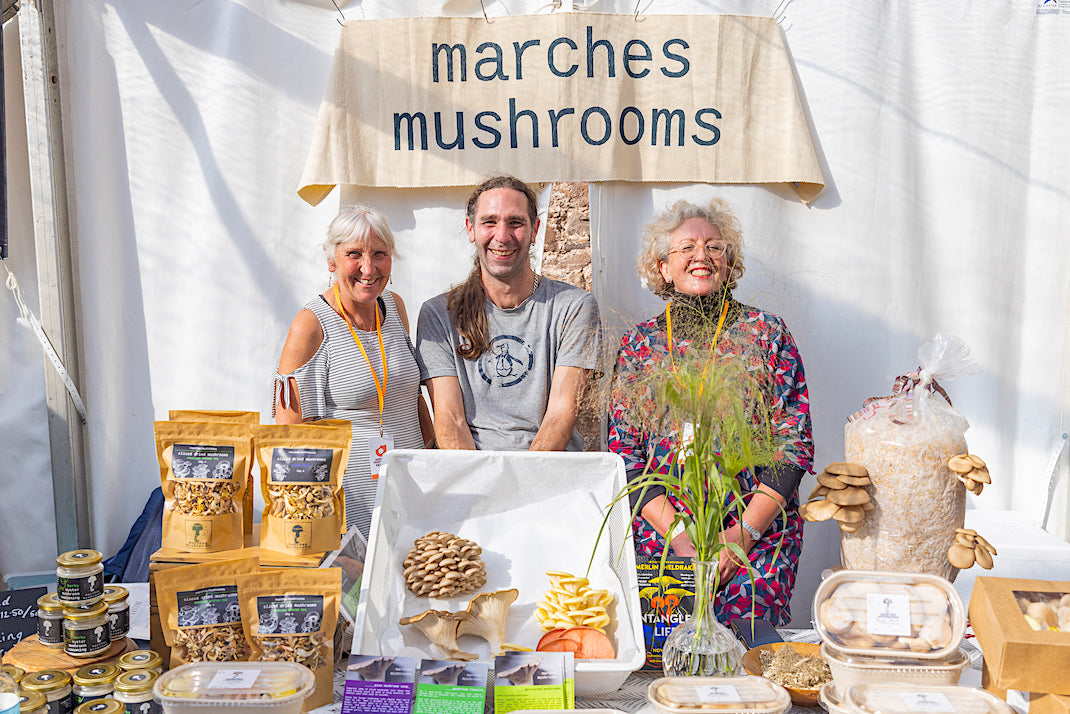about marches mushrooms
tucked away on the wales-england border, high up in the lush green hills, sits our tiny farm. we rent part of a disused dairy farm which shut down 13 years ago. now, small businesses rent out units at the farm. we converted the old bottling rooms and laboratory into our incubation and fruiting rooms, where we grow a variety of wood-loving mushrooms.
unlike white button mushrooms and 'chestnut' mushrooms, there's no manure, and no dark caves in our process. rather, our mushrooms need an abundance of fresh air, mist, and light to grow. we control a very well insulated indoor environment to provide the optimum growing conditions.
we started this journey as a couple during the pandemic, since both our lines of work were affected by what was going on, and we felt a push to provide food locally, as the shops were looking more bare than ever. mushrooms are such a fantastic crop for a whole plethora of reasons. our top three must be their amazing taste, nutrition and health value, and thirdly, the fact that they take so little space, water and energy to produce, especially when compared to almost all other food crops and staples such as cotton, meat, fruit and vegetables...
we pride ourselves on selling the cleanest, freshest mushrooms that money can buy, and producing very little waste, and tons and tons of beautiful compost for gardens.

abergavenny food festival 2022 best in show
taylor's surprise at winning best in show at our favourite event of the year, pictured with the two lovely judges who presented us with our first ever award!


